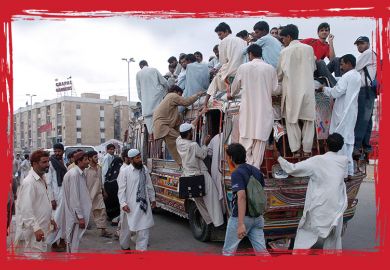View the THE Sub-Saharan Africa University Rankings 2023 results
A South African university has taken the top spot in Times Higher Education’s inaugural Sub-Saharan Africa (SSA) University Rankings.
The rankings were designed to try to address local higher education challenges for an area that is home to more than a billion people.
The University of the Witwatersrand (Wits) claims the first SSA rankings title, followed by another South African institution, the University of Johannesburg, in second, and Muhimbili University of Health and Allied Sciences in Tanzania in third. The league table includes 88 universities across 20 countries.
Mahomed Moolla, head of the strategic partnerships office at Wits, said it was important to look at the challenges faced by a region that is one of the largest in the world but has a tertiary education enrolment rate well below the global average.
“Most universities in the sub-Saharan Africa region have specific developmental goals that need to be achieved because these are linked to the developmental goals of the country or region,” he said.
“These issues are what need to be taken account of when ranking the universities in the area.”
THE Sub-Saharan Africa University Rankings 2023: the top 10
| 2023 rank | Institution | Country |
| 1 | University of the Witwatersrand | South Africa |
| 2 | University of Johannesburg | South Africa |
| 3 | Muhimbili University of Health and Allied Sciences | Tanzania |
| 4 | University of Pretoria | South Africa |
| 5 | Makerere University | Uganda |
| 6 | University of the Western Cape | South Africa |
| 7 | Covenant University | Nigeria |
| 8 | UGHE – University of Global Health Equity | Rwanda |
| 9 | Ashesi University | Ghana |
| 10 | Ardhi University | Tanzania |
The rankings use a hybrid methodology that covers five key pillars: resources and finance; access and fairness; teaching skills; student engagement; and Africa impact.
Pauline Rose, professor of international education at the University of Cambridge and director of the Research for Equitable Access and Learning Centre, said this ranking was important because it put the spotlight on universities that were vital for the socio-economic development of the region.
However, these institutions were underfunded, experienced extremely large faculty-to-student ratios, and had limited time and money for research, she added.
Sub-Saharan Africa University Rankings 2023 digital edition
Making up the rest of the top 10 are two more universities from South Africa, one further institution from Tanzania and one each from Uganda, Nigeria, Rwanda and Ghana.
Of them, seven are public universities, which received an average overall score in the rankings of 50 per cent and charged a median of £966 per year. By comparison, private institutions scored an average of 43 per cent, with not-for-profits charging £1,922 and for-profits charging £3,291 annually.
Public providers also scored higher on average across four of the five pillars: resources and finance; access and fairness; student engagement; and Africa impact.
“Public and private higher education institutions in sub-Saharan Africa complement each other in providing quality education for the masses,” said Laté Lawson, research manager at the charity Education Sub Saharan Africa.
However, Dr Lawson said that each had its own unique administrative system so their strengths and weaknesses varied.
Private institutions were seen as flexible and efficient and often went the “extra mile” to track their graduates’ progress, he said, while public ones were easily accessible, provided a wider variety of courses and were much cheaper.
Of the 121 institutions that contributed data for this league table, Nigerian universities make up the largest proportion (42 per cent), followed by those in South Africa (12 per cent) and Ghana (7 per cent).
About two thirds of participating universities are public institutions; a quarter are private, not-for-profit organisations; and about a tenth are private, for-profit organisations. This reflects the proportions across Nigeria, which heavily influences the results, and the rest of the region.
Register to continue
Why register?
- Registration is free and only takes a moment
- Once registered, you can read 3 articles a month
- Sign up for our newsletter
Subscribe
Or subscribe for unlimited access to:
- Unlimited access to news, views, insights & reviews
- Digital editions
- Digital access to THE’s university and college rankings analysis
Already registered or a current subscriber? Login









